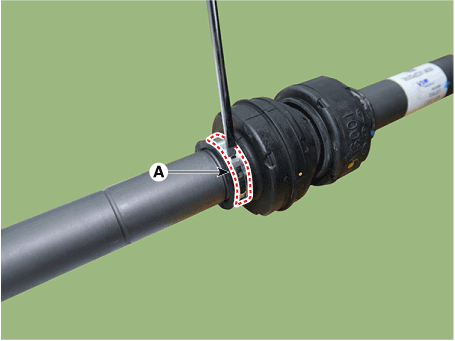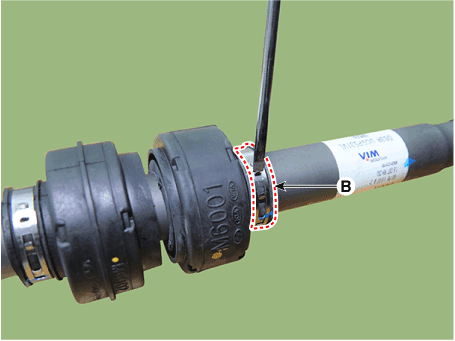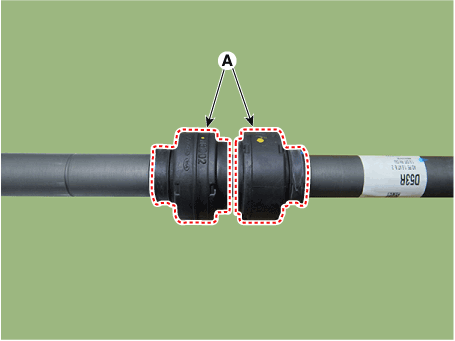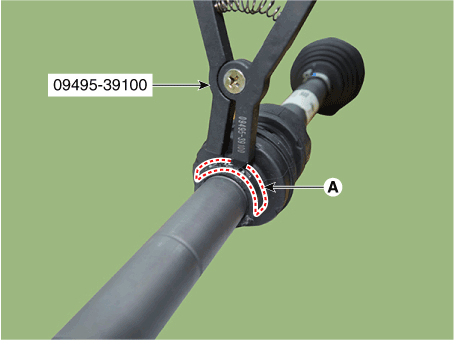Hyundai Elantra: Driveshaft Assembly / Dynamic Damper
Hyundai Elantra (CN7) 2021-2025 Service Manual / Driveshaft and axle / Driveshaft Assembly / Dynamic Damper
Repair procedures
| Removal |
| 1. | Remove the front drive shaft. (Refer to Driveshaft Assembly - "Front Driveshaft") |
| 2. | Remove the trans axle side joint. (Refer to Driveshaft Assembly - "Transaxl Joint") |
| 3. | Remove the dynamic damper band (A, B) using driver (-).
|
| 4. | Remove the dynamic damper (A).
|
| Installation |
| 1. | Install the dynamic damper (A).
|
| 2. | Install the dynamic damper band (A) using SST (09495-39100).
|
| 3. | Install the transaxle side joint. (Refer to Driveshaft Assembly - "Transaxl Joint") |
| 4. | Install the front driveshaft. (Refer to Driveshaft Assembly - "Front Driveshaft") |
 Front Driveshaft
Front Driveshaft
Components and components location
Components1. Driveshaft (LH)2. Dynamic damper3. Driveshaft (RH)
Repair procedures
Removal1.Loosen the wheel nuts slightly...
 Joint Assembly (Transaxle side)
Joint Assembly (Transaxle side)
Repair procedures
Removal
•
Drive shaft joints require special grease, so do not add any other type of grease...
Other information:
Hyundai Elantra (CN7) 2021-2025 Service Manual: Repair procedures
Replacement1.Remove the plug hole (A).2.Loosen the mounting nuts and remove the wiper arm (A). Tightening torque : 22.6 - 26.5 N.m (2.3 - 2.7 kgf.m, 16.6 - 19.5 lb-ft)3.Disconnect the washer nozzle (A).4.Detach the clips, then remove the cowl top cover (B)...
Hyundai Elantra (CN7) 2021-2025 Service Manual: Front Driveshaft
Components and components location Components1. Driveshaft (LH)2. Dynamic damper3. Driveshaft (RH) Repair procedures Removal1.Loosen the wheel nuts slightly.Raise the vehicle, and make sure it is securely supported.2.Remove the front wheel and tire (A) from the front hub...
Copyright © 2025 www.helantra7.com





